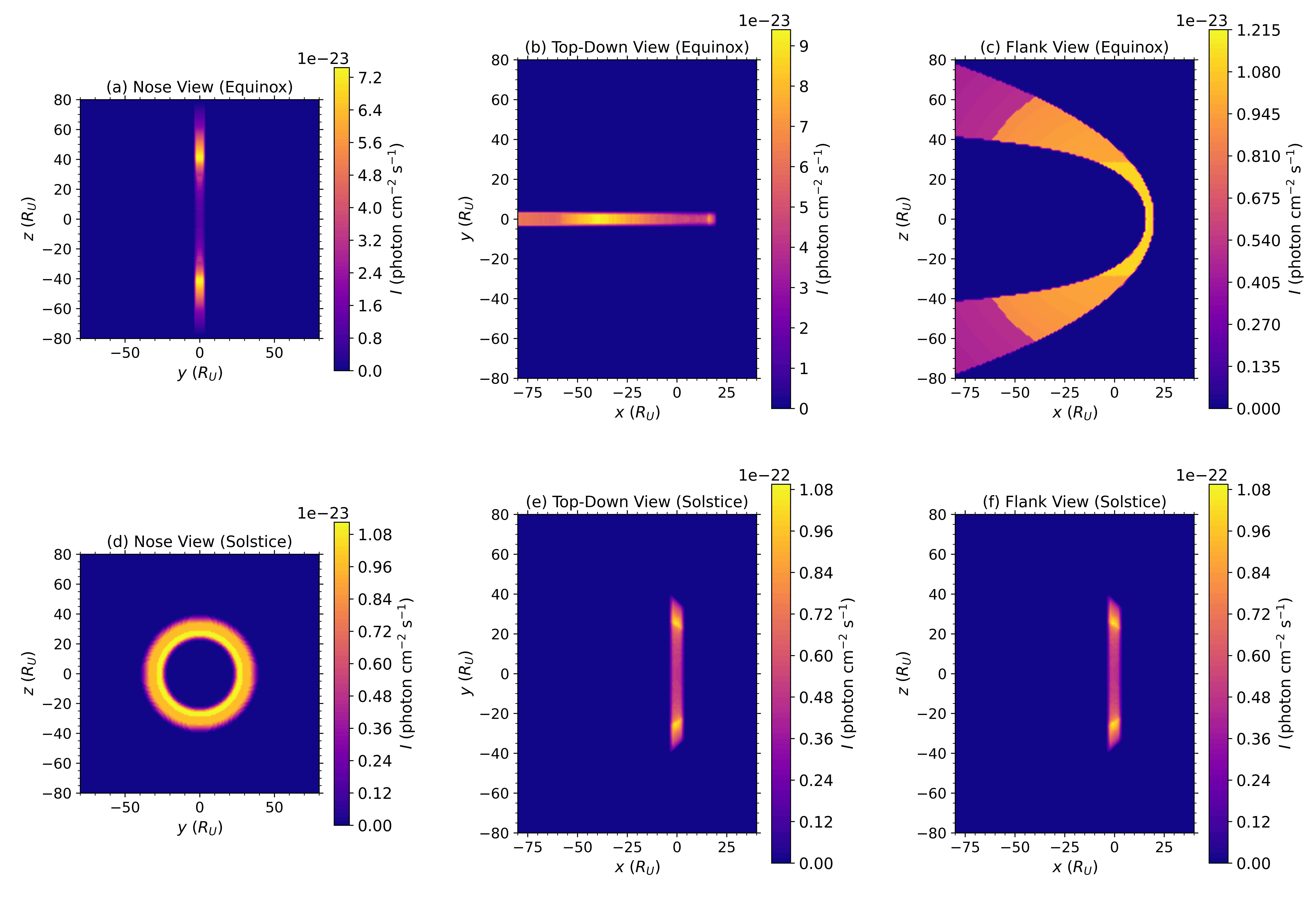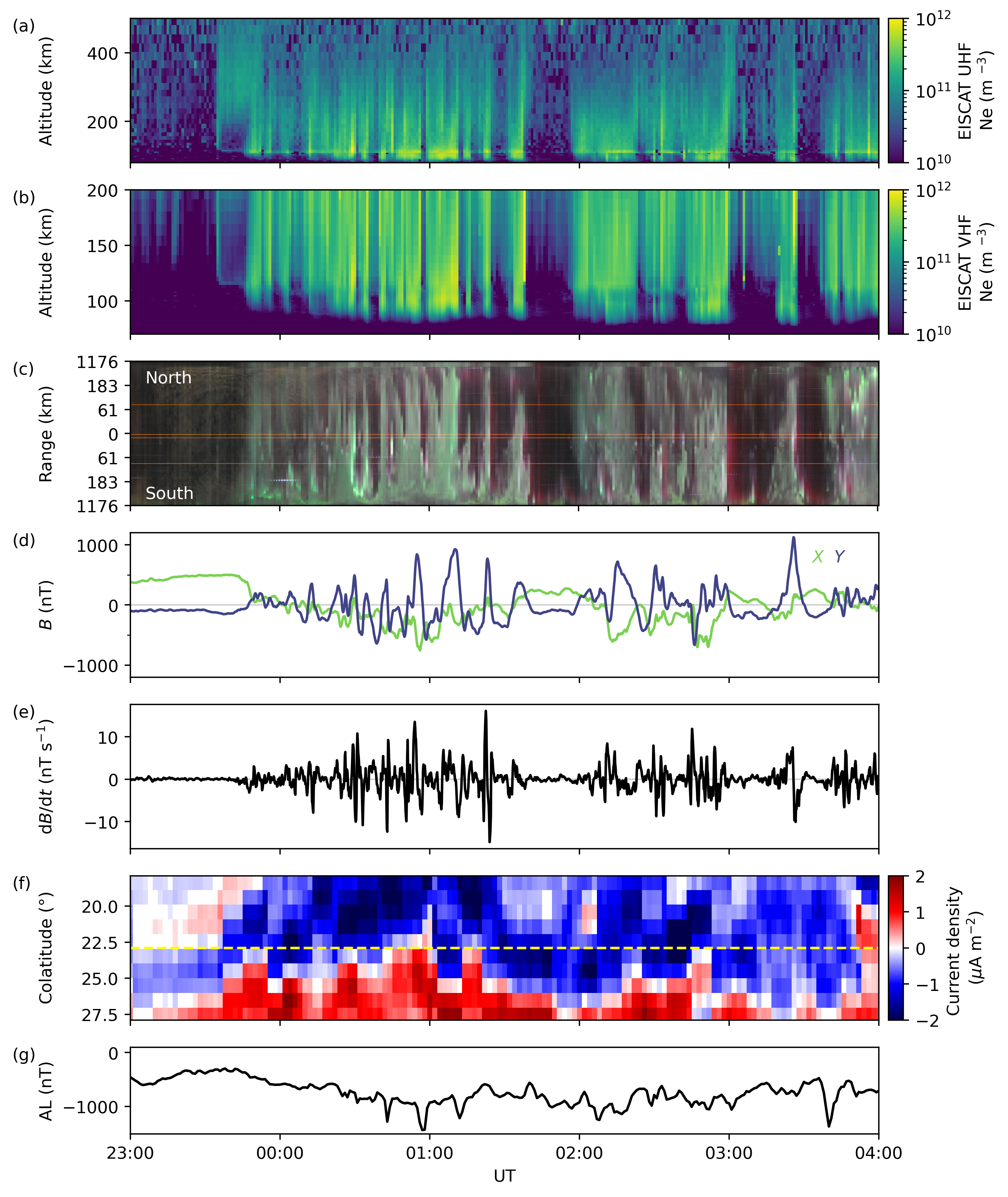MIST
Magnetosphere, Ionosphere and Solar-Terrestrial
Estimating Soft X-Ray Emission from Uranus's Magnetosheath
Estimating Soft X-Ray Emission from Uranus's Magnetosheath
By Dan Naylor (Lancaster University)
Soft X-rays can be generated within planetary magnetosheaths due to charge exchange between neutrals and highly charged solar wind ions such as O^7+. Imaging of the soft X-rays is an emerging technology that aims to provide global and dynamic views of the magnetosheath and cusps, and their response to solar wind driving. The ESA-CAS SMILE mission will soon be launched with a soft X-ray imager (SXI) instrument onboard to investigate the terrestrial magnetosheath. We explore the viability of similar investigations at Uranus.
Uranus has one of the most unusual and complex environments in the solar system. A large obliquity combined with a highly tilted, offset magnetic axis result in an asymmetric and constantly varying magnetosphere where the plasma and neutral source rates from the moons are unconstrained. We impose a simple bullet shaped magnetopause and moon tori informed by Voyager 2 observations to predict soft X-ray emission from the Uranian magnetosheath. We estimate volumetric emission rates of soft X-rays are on the order of 10^-10 photon cm^-3 s^-1, being higher at equinox due to the orientation of the magnetosheath relative to the moon tori. Simple estimates of intensity and flux find that a SMILE-like instrument could detect ~100 photons in a quarter of a planetary rotation at a distance of 212 R_U, as shown in the figure. A hypothetical future imager, with improved FOV and effective area, would detect ~20,000 photons per planetary rotation at 100 R_U. These are promising initial results that suggest imaging of the magnetosheath is possible within key system timescales. Future studies will include magnetospheric cusps and a full range of solar wind ions, which are anticipated to increase emission rates.

Modelled intensity maps for a SMILE‐like SXI at 212 R_U from different viewing geometries at (top row) equinox, where the neutrals are edge-on to the Sun, and (bottom row) solstice, where the neutrals are ring on to the Sun: (a/d) front‐on, (b/e) top‐down and (c/f) side‐on. The different panels show that the amount of flux detected is dependent on viewing position, and an orbital mission should consider the implications of different possible imaging positions.
See publication for details:
Naylor, D., Ray, L. C., Dunn, W. R., Jasinski, J. M., & Paty, C. (2025). Estimating soft X-ray emission from Uranus's magnetosheath. Journal of Geophysical Research: Space Physics, 130, e2025JA034171. https://doi.org/10.1029/2025JA034171
Omega Bands as a Source of Large dB/dt in the Dawn Sector
Omega Bands as a Source of Large dB/dt in the Dawn Sector
By Rosie Hodnett (University of Leicester)
Omega bands are a type of aurora which occur in the dawn sector and drift eastwards. They are often described as having a morphology similar to that of the Greek letter Ω. Omega bands have been shown to have the potential to cause geomagnetically induced currents, which are an important area of research as they are recognised as a hazard to our infrastructure, such as power grids.
In this study, we have examined an omega band event which occurred from 23 – 04 UT on 2012-11-13—14 using multiple instruments around Tromsø, Norway (69.6°N, 19.2°E). The first two panels (a-b) of the figure show EISCAT UHF/VHF electron density measurements, panel (c) shows a keogram of all-sky camera (ASC) data. It is clear that when the luminous aurora passes over head, enhancements in electron density are observed.
Panel (d) shows the magnetic field perturbations as measured by the IMAGE magnetometer and (e) shows dB/dt. For this event, we saw large perturbations in the Y component of the magnetic field, with a maximum peak of approx. 915 nT. The rapid motion of the omega bands leads to large dB/dt of above 10 nT/s.
Panel (f) shows AMPERE data, where the yellow dashed line is the location of EISCAT, where red is upward field aligned current (FAC) and blue is downward FAC. The auroral signatures and large dB/dt are evident when EISCAT is located between the boundary of region 1 and 2 current systems.
Panel (g) shows AL, where negative excursions due to the ground based magnetic perturbations of the omega bands are apparent. It is important that these rapid variations in AL are not misidentified as substorms, because as well as substorms, we have shown that omega band activity in the dawn sector causes drops in AL.

See publication for details:
Hodnett, R. M., Milan, S. E., Nozawa, S., Raita, T., Gjerloev, J. W., Vines, S. K., & Paxton, L. J. (2025). Omega bands as a source of large dB/dt in the dawn sector. Journal of Geophysical Research: Space Physics, 130, e2025JA034342. https://doi.org/10.1029/2025JA034342
Autumn MIST 2025 Draws to a Close
We hope you all enjoyed Autumn MIST 2025!
The MIST community showed up in force to share, to learn, to collaborate, and to socialise.
We had a wonderfully diverse spread of topics across the talks and posters. Thanks again to those that presented. Keep an eye out in the coming months for the meeting report article in A&G which will showcase the fascinating science that was on display.
We will discuss the results of the website survey, with details to follow on the mailing list in the near future.
There will also be a post-meeting survey sent out soon, please find the time to share your feedback, both positive and negative, so we can take your comments into the planning room for future meetings.
Our sincerest thanks to everyone for attending. See you soon!